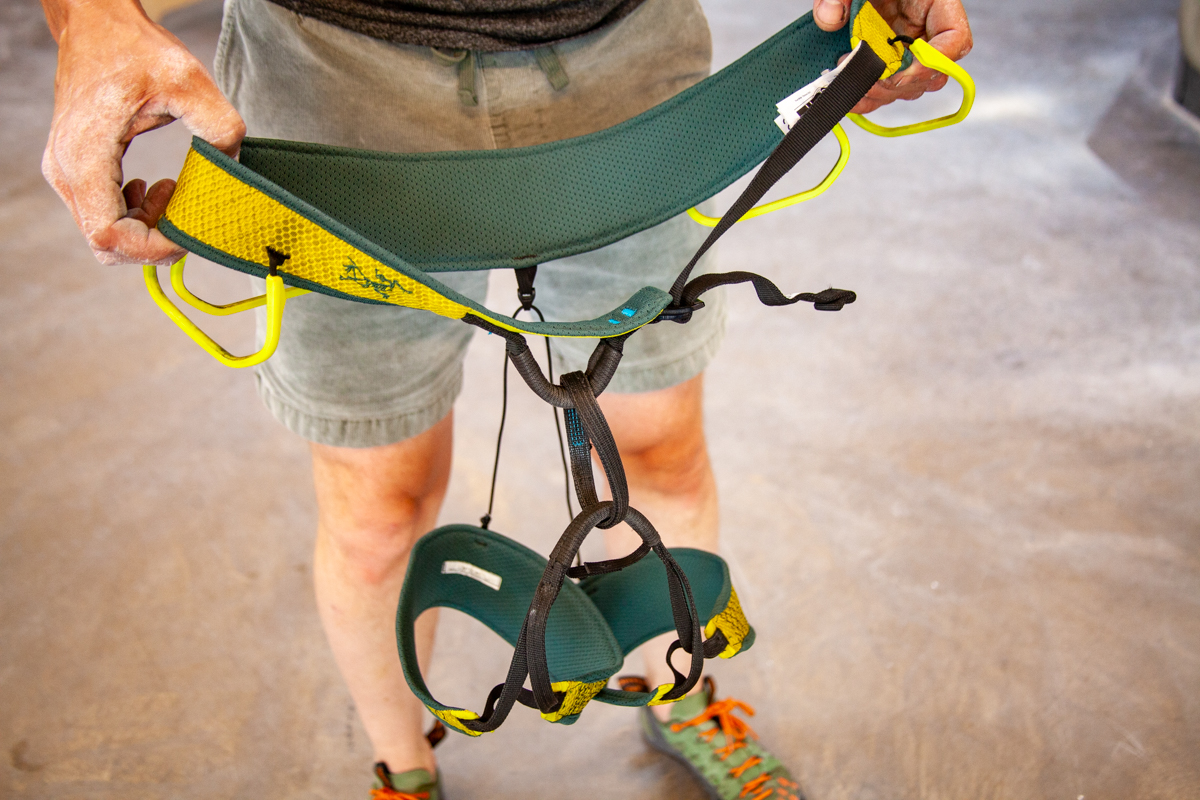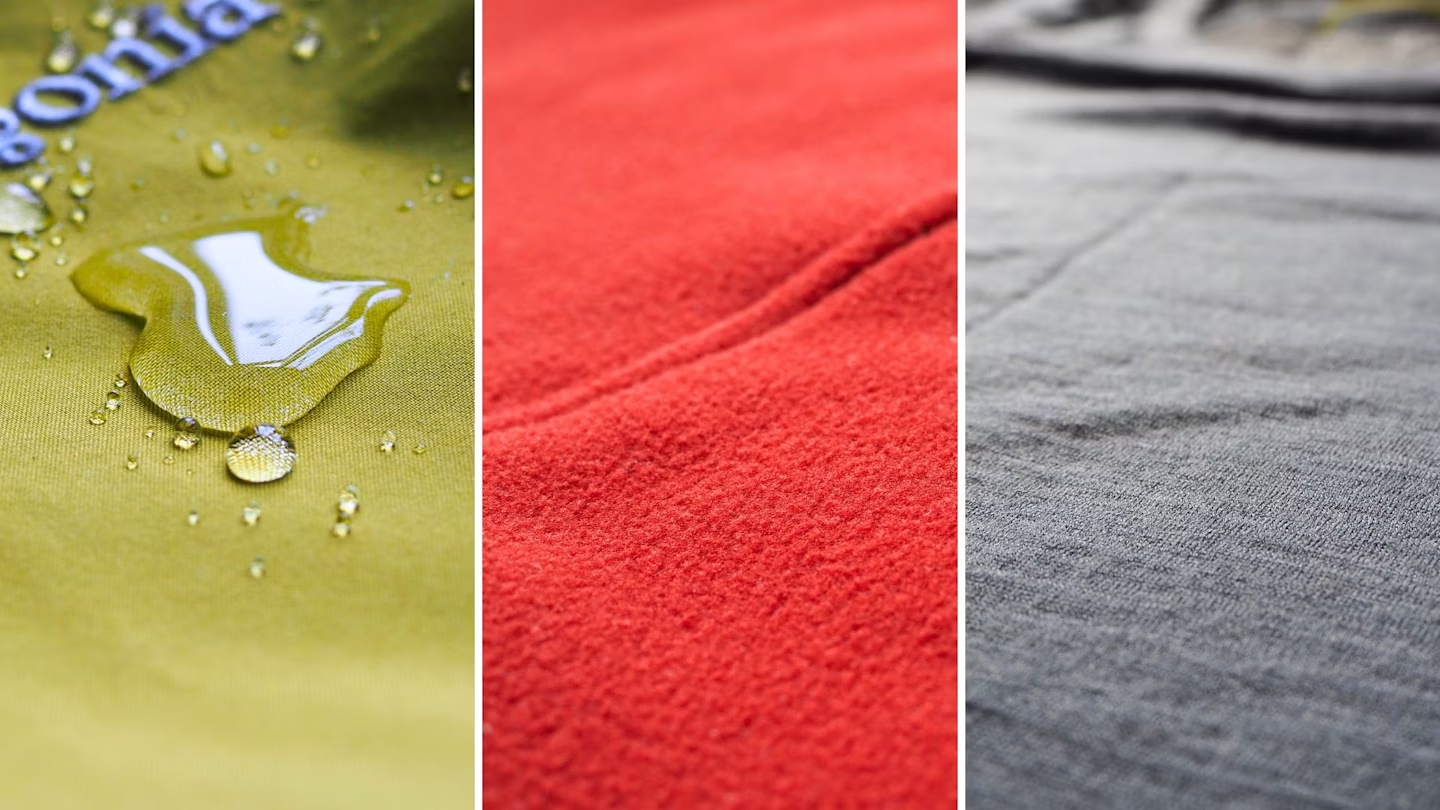Climbing, whether it’s sport climbing, trad, or mountaineering, is an exhilarating and challenging sport that requires the right gear to ensure safety and comfort. Among the most critical pieces of equipment is the climbing harness. A good climbing harness doesn’t just keep you safe, but also ensures that you can move comfortably during long climbs or multi-pitch routes. But with so many options on the market, how do you choose the right one? This article will explore the key features that make a climbing harness a reliable and comfortable companion for your adventures.
1. Safety Comes First: The Core Features of a Harness
When it comes to climbing, the most important factor to consider is safety. The harness is the direct connection between you and the rope, so it must meet certain safety standards. Here’s what you should look for:
A. Strong Material Construction
The best climbing harnesses are made of high-quality materials, such as high-strength nylon or polyester webbing. These materials provide durability, abrasion resistance, and strength, ensuring that your harness can withstand the wear and tear of climbing.
Harnesses typically use a 15-20mm wide webbing for leg loops and waist straps. The width of the webbing ensures the even distribution of force, minimizing pressure points.
B. Certified Safety Standards
In many countries, climbing harnesses must meet specific safety standards. For example, in Europe, the CE EN 12277 standard ensures the harness can handle significant forces. In the U.S., the UIAA (International Climbing and Mountaineering Federation) tests harnesses to ensure they meet their standards for strength, safety, and durability.
Look for a harness that meets these standards. This ensures that the harness has passed rigorous tests and can protect you in the event of a fall.
C. Proper Sizing
A good harness should fit snugly but not restrict your movement. When selecting a climbing harness, consider your waist size and leg loop measurements. Most climbing harnesses come in multiple sizes to accommodate a range of body types.
Ensure that your harness is adjustable for a customizable fit. Adjustable leg loops and waistbands allow for fine-tuning of the fit, making it easier to accommodate layers in colder weather or to dial in the fit when climbing in warmer conditions.
2. Comfort: How to Ensure Your Harness Feels Good After Hours of Use
Comfort is a crucial factor, especially for multi-pitch routes or trad climbing, where the harness may be worn for long periods. Here are some important features that contribute to comfort:

A. Padding and Breathability
A harness with ample padding, especially around the waist and leg loops, will help alleviate pressure points during extended wear. Look for harnesses with soft, breathable padding that will allow for airflow, reducing sweat and discomfort.
While padded harnesses are generally more comfortable, they can add weight and bulk. If you’re a weight-conscious climber or primarily climb in warm weather, you may want a harness with minimal padding and an emphasis on breathability.
B. Adjustable Leg Loops
The leg loops of your harness should be adjustable to provide the perfect fit. If your harness has fixed leg loops, make sure they’re wide enough to prevent chafing, yet tight enough to stay securely in place.
Adjustable leg loops add versatility, allowing you to tighten or loosen them as needed. They are also beneficial when you’re wearing different clothing layers. A snug fit around your legs will keep the harness from shifting during the climb, reducing discomfort.
C. Waistband Fit
The waistband should provide even pressure distribution and stay secure, without digging into your sides. Many harnesses come with a “dual waist belt” design that enhances comfort. These belts evenly distribute your weight, reducing the likelihood of discomfort during long climbs.
Some climbers prefer a narrower waistband for greater freedom of movement, while others prefer a wider waistband for enhanced comfort. Consider your personal preference when selecting the width of your waist strap.
3. Design and Functionality: Balancing Lightweight and Durability
The design and overall functionality of a climbing harness are just as important as comfort and safety. Here’s a breakdown of what to look for:
A. Gear Loops and Attachment Points
Climbing requires a variety of gear: carabiners, quickdraws, belay devices, and more. A good harness should come with enough gear loops to hold your equipment without getting in the way. Typically, a harness will have four gear loops: two on the sides and two at the back. Some high-end models may offer additional loops or reinforced attachment points for extra gear.
The loops should be large enough to accommodate multiple carabiners and should be positioned to allow for easy access to your gear during the climb. Look for gear loops made from strong, durable materials that won’t wear down quickly under load.
B. Lightweight and Compact Design
For sport climbers, weight is a crucial factor. A lighter harness will make a big difference on long routes or during fast-paced climbs. However, lightweight does not mean compromising on safety. Many modern harnesses use lightweight yet durable materials that provide the necessary protection while keeping the overall weight to a minimum.
If you’re tackling multi-pitch climbs or alpine routes, you may want a more minimalistic, compact harness that can be easily packed and worn under a jacket. These models are typically streamlined, lightweight, and focus on functionality over extra features.
C. Adjustable and Detachable Features
Some climbing harnesses offer features like adjustable risers (straps between the waist and leg loops), removable gear loops, or adjustable waist straps. These features add versatility to the harness, allowing you to adapt it to your climbing style and comfort preferences.
Some brands offer harnesses with detachable leg loops, which allow you to remove the harness more easily, particularly useful for alpine or mountaineering climbers who need to put the harness on and off quickly.
4. The Fit: Finding the Perfect Harness for Your Body
The fit of your harness is one of the most critical factors in both safety and comfort. Here’s how to ensure you get the right fit:
A. Waist and Leg Loops Fit
When you try on a climbing harness, ensure that the waist belt fits snugly, sitting on your iliac crest (the top of your hips). It should not slide down over your hips or dig into your stomach. The leg loops should also be snug but comfortable. You should be able to move freely without the harness pinching your skin or causing discomfort.
To check if your harness is too loose or tight, perform a few simple tests: move your legs in all directions, squat, and bend over. The harness should stay in place and allow for a wide range of movement without restriction.

B. One Size Doesn’t Fit All
Different brands and models cater to various body types. If you have a smaller frame, a women’s specific harness might provide a better fit with a narrower waist strap and adjustable leg loops. For larger body types, certain brands offer plus-size options that accommodate bigger waists and thighs.
5. Durability: Longevity in Extreme Conditions
Climbing is a demanding activity, and your gear should be able to withstand frequent use in harsh conditions. A durable harness is made from strong, abrasion-resistant materials like high-strength webbing and reinforced stitching.
Harnesses designed for alpine or trad climbing are often more durable because they’re built to handle the rough environments of rocky terrains, extreme temperatures, and frequent exposure to the elements.
It’s essential to regularly inspect your harness for signs of wear and tear. Check the stitching, webbing, and buckles. Even minor damage can compromise the safety of your harness, so make sure to replace it as needed.
6. Types of Climbing Harnesses: Choosing Based on Your Activity
Climbing harnesses come in various types, each designed for specific climbing activities. Here’s a quick guide to help you choose:
A. Sport Climbing Harnesses
These are generally lightweight, with minimal padding and streamlined features. They focus on providing mobility and comfort for fast-paced sport climbing. They often have fewer gear loops but are designed for efficiency and ease of movement.
B. Trad Climbing Harnesses
Trad climbers need harnesses that offer comfort, adjustability, and durability. These harnesses tend to have more padding, more gear loops, and can be used for longer climbs. They may also feature additional gear loops or even adjustable risers for greater comfort.
C. Mountaineering and Alpine Harnesses
These are designed for cold, rugged environments. They tend to be lightweight, compact, and designed to be worn under layers of clothing. Some models can be worn without taking off your jacket, which is crucial for mountaineering expeditions.
7. Maintenance and Care
To get the most out of your harness, proper maintenance is key. Avoid exposing your harness to unnecessary wear and tear, such as excessive UV light or abrasion from sharp rocks. Clean your harness regularly with mild soap and water, avoiding harsh chemicals or bleach. Store it in a cool, dry place, away from direct sunlight.
Conclusion: The Best Harness for You
A good climbing harness is more than just a safety tool – it’s a key piece of equipment that ensures comfort, performance, and security during your climb. By considering the features of the harness in terms of safety, comfort, design, and fit, you’ll be able to select the one that best suits your climbing style.
Whether you’re a seasoned climber or just getting started, understanding the importance of a well-fitted, functional harness will help you make the right choice for your climbing needs. Invest in a good harness, take the time to ensure a proper fit, and enjoy your climbing adventures with confidence!























